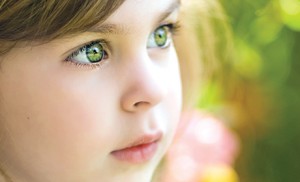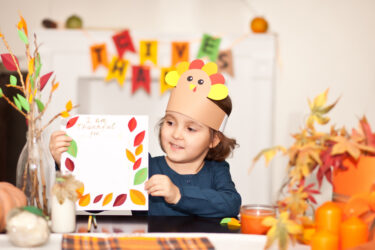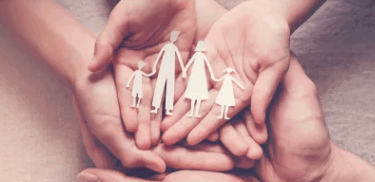Like anything else when it comes to children, vision develops and improves as they grow. According to Miles J. Burke, M.D., a pediatric ophthalmologist in Montgomery, children require “clear visual information sent from both eyes to the brain. If a problem interferes with clear vision in either or both eyes, the connections from the eye to the brain may become weak and the brain will not develop properly.” In other words, it’s crucial to keep tabs on your child’s vision as she grows — especially if you detect something’s not right — so you won’t be surprised if your pediatrician recommends a specialist.
A Typical Exam
Burke says infants and young children can sit on a parent’s lap during the examination. They’ll identify pictures of common objects or letters (for older kids); track a lighted toy so the doctor can check visual function; and be examined with an ophthalmoscope (an instrument with a bright light) so the doctor can see inner eye structures. Sometimes kids will have their eyes dilated to provide a better view. If that’s the case, be honest and tell your child it will sting a bit and that his vision will be blurry for a few hours.
Common Eye Disorders
One in four children will suffer from an eye disorder, Burke says. The three most common types of issues are refractive errors (problems focusing), amblyopia (poor or improper visual development of the eye) and strabismus (misaligned eyes).
Strabismus is an imbalance of eye muscles and causes eyes to deviate from their normal position, meaning that the eye might turn in, out, up or down. Although children do not outgrow strabismus, there are very successful therapies to straighten the eyes. Lots of kids with strabismus (about half according to Burke), also have amblyopia, which is poor vision from a lack of use. For these children, a treatment known as “patching” is required, and in addition often requires glasses. Kids wear a patch over the good eye, which encourages the weaker eye to develop better vision. Burke says that patching is typically successful, although children may have to utilize the patch for months, possibly even years, and amblyopia can only be corrected if it is treated before age 8.
EYE SPY
Miles J. Burke, M.D., offers up some indicators of vision issues in children:
• Excessive eye rubbing
• Tilting or turning the head
• Stumbling over small objects
• Squinting or frowning
• Red-rimmed, encrusted, or swollen eyes
• Recurring styes
• Inability to see distant objects clearly
• Shutting or covering one eye
• Blinking more than usual
• Crossed or wandering eyes
• Inflamed or watery eyes
• Itching, burning or scratchy eyes
• Reporting of blurred or double vision





